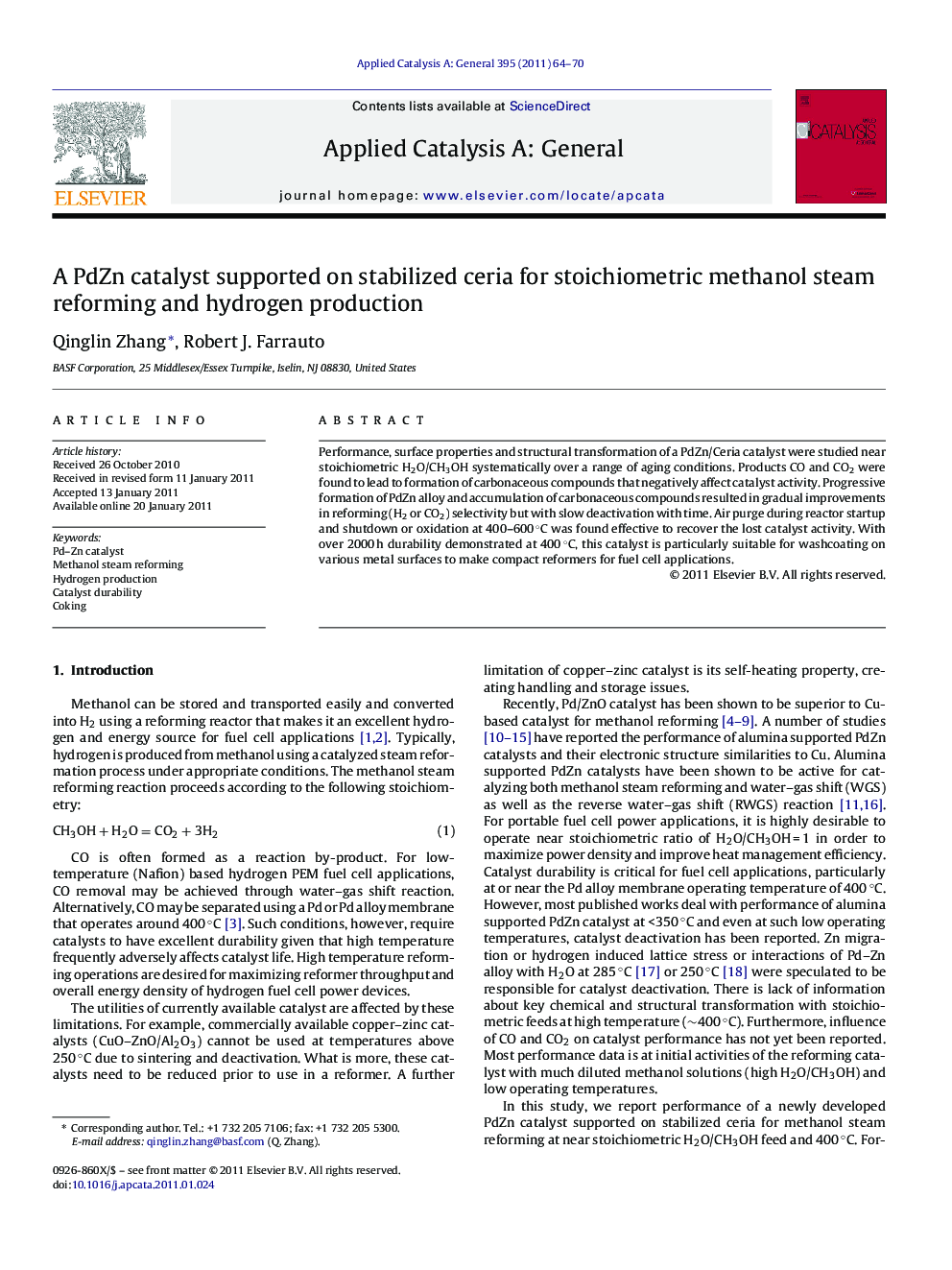| Article ID | Journal | Published Year | Pages | File Type |
|---|---|---|---|---|
| 41504 | Applied Catalysis A: General | 2011 | 7 Pages |
Performance, surface properties and structural transformation of a PdZn/Ceria catalyst were studied near stoichiometric H2O/CH3OH systematically over a range of aging conditions. Products CO and CO2 were found to lead to formation of carbonaceous compounds that negatively affect catalyst activity. Progressive formation of PdZn alloy and accumulation of carbonaceous compounds resulted in gradual improvements in reforming (H2 or CO2) selectivity but with slow deactivation with time. Air purge during reactor startup and shutdown or oxidation at 400–600 °C was found effective to recover the lost catalyst activity. With over 2000 h durability demonstrated at 400 °C, this catalyst is particularly suitable for washcoating on various metal surfaces to make compact reformers for fuel cell applications.
Graphical abstractFigure optionsDownload full-size imageDownload high-quality image (172 K)Download as PowerPoint slideResearch highlights► The PdZn catalyst can be used to process near stoichiometric H2O/CH3OH feed. ► Pd–Zn alloy formed gradually under methanol steam reforming conditions. ► Carbon removal with air oxidation at 400–600 °C regenerates the catalyst. ► No special measures are required for the catalyst storage or activation. ► This catalyst can be applied to structured surfaces for H2 fuel cell applications.
